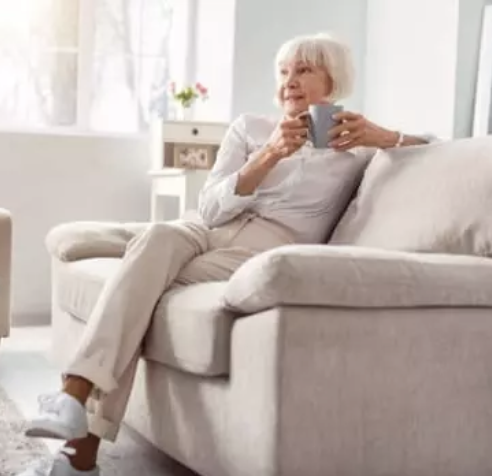
Shingles, scientifically known as herpes zoster, is a viral infection that emerges from the reactivation of the varicella-zoster virus, the same virus that causes chickenpox. This condition often surfaces as a painful and blistering rash, and it is more prevalent in older adults. In this article, we will delve into the causes, symptoms, and preventive measures for shingles, a condition that serves as a reminder of a bygone chickenpox infection.
The origins of shingles
Find YOUR ideal care home NOW!
Shingles arise from the dormant varicella-zoster virus, which may have been contracted during a previous bout of chickenpox, often in childhood. The virus remains concealed within the body's nerve cells, where it can lay dormant for decades. However, in certain circumstances, it can reactivate, causing shingles.
Recognizing the symptoms
Shingles typically manifests with the following characteristics:
-
Painful rash: The hallmark of shingles is a painful, blistering rash. It often appears as a strip or band on one side of the body, following the path of a nerve.
-
Itching and burning: Before the rash emerges, many individuals experience itching, burning, or tingling in the affected area.
-
Blisters: The rash soon develops into fluid-filled blisters, which can rupture and form scabs.
-
Flu-like symptoms: Some people may also experience mild fever, fatigue, and headache.
Risk factors and prevalence in older adults
Shingles becomes more common with age, particularly in individuals over the age of 50. Several factors increase the risk of shingles:
- Prior chickenpox: If you've had chickenpox in the past, the virus remains in your body and can reactivate.
- Weakened immune system: Conditions or medications that weaken the immune system can increase susceptibility to shingles.
- Stress: High levels of stress may contribute to an increased risk of shingles.
- Chronic illness: Certain chronic diseases can elevate the likelihood of shingles.
Prevention and treatment
Vaccination is a highly effective method for preventing shingles. The shingles vaccine, recommended for individuals aged 50 and older, can reduce the risk of developing the condition and its complications.
If shingles do occur, antiviral medications prescribed by a healthcare professional can help shorten the duration of the illness and alleviate its symptoms. Pain management and care for the rash are also essential.
Risk Factors and Prevalence of Shingles
| Risk Factor | Description |
|---|---|
| Prior Chickenpox | If you have had chickenpox, the virus remains dormant in your body and can reactivate later in life as shingles. |
| Weakened Immune System | Conditions or medications that weaken the immune system can increase susceptibility to shingles. |
| Stress | High levels of stress may contribute to an increased risk of shingles reactivation. |
| Chronic Illness | Certain chronic diseases, such as diabetes or cancer, can increase the likelihood of developing shingles. |
Shingles can be a painful and disruptive condition, but early intervention and proper care can mitigate its effects. Recognizing the symptoms and seeking medical attention promptly can lead to a faster recovery and reduced discomfort. With vaccination and awareness, older adults can take proactive steps to protect themselves from this reawakening of the chickenpox virus.
FAQ:
What is shingles?
Shingles is a reactivation of the varicella-zoster virus, which causes chickenpox. It leads to a painful rash and can occur years after a person has had chickenpox.
How does shingles develop?
Shingles occurs when the dormant varicella-zoster virus, which remains in nerve cells after a chickenpox infection, reactivates, often due to a weakened immune system or stress.
What are the common symptoms of shingles?
Shingles typically presents with a painful, blistering rash, itching or burning sensations before the rash appears, flu-like symptoms, and in some cases, fatigue or headache.
Who is at risk for shingles?
Older adults, particularly those over the age of 50, are at increased risk for shingles. Other risk factors include a weakened immune system, stress, and a history of chickenpox.
How can shingles be prevented?
The shingles vaccine, recommended for adults aged 50 and older, is highly effective in preventing shingles and its complications.
What treatments are available for shingles?
Antiviral medications prescribed by a healthcare provider can shorten the duration of shingles and alleviate symptoms. Pain management and care for the rash are also essential.
Is shingles contagious?
Shingles itself is not contagious, but the varicella-zoster virus can be spread to individuals who have never had chickenpox or the chickenpox vaccine, causing them to develop chickenpox.
How long does shingles last?
Shingles typically lasts 2-4 weeks, with symptoms improving over time. However, some individuals may experience lingering pain known as postherpetic neuralgia.
Can shingles be fatal?
While shingles is not usually life-threatening, it can cause significant pain and complications, especially in older adults or those with weakened immune systems.
What should I do if I suspect I have shingles?
If you notice symptoms of shingles, it's important to consult a healthcare provider as soon as possible for proper diagnosis and treatment to reduce the risk of complications.
Need help finding a care home?
Senior Home Plus offers free personalized guidance to help you find a care facility that suits your health needs, budget, and preferred location in the UK.
Call us at 0203 608 0055 to get expert assistance today.
Do you need a care home for yourself or your loved one?
Search for Care Homes by Region
| East Midlands | Eastern | Isle of Man |
| London | North East | North West |
| Northern Ireland | Scotland | South East |
| South West | Wales | West Midlands |
| Yorkshire and the Humber |
Share this article :
Latest posts
You are looking for an establishment for your loved one ?
Get availability & prices
Fill in this form and receive
all the essential information
We would like to inform you of the existence of the opposition list for telephone canvassing.









